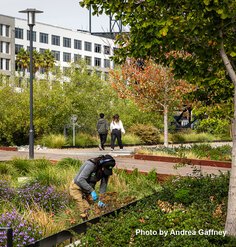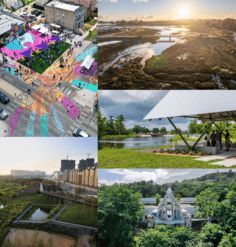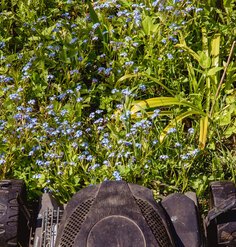Research Update: Measuring Accumulation of Pollutants Near Highways
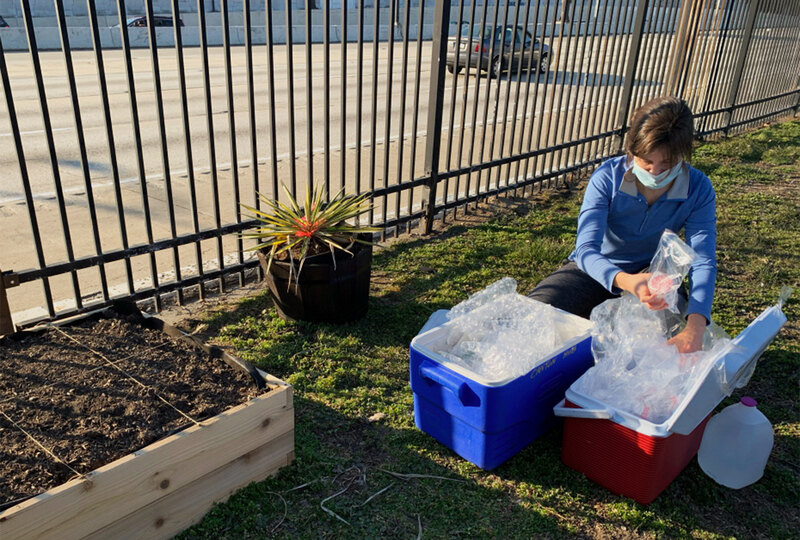
In 2019, the Landscape Architecture Foundation launched the LAF Research Grant in Honor of Deb Mitchell to support research relevant to design practice. The first $25,000 award was made for an 18-month project that began in September 2020. Six months in, Principal Investigators Allison Harvey of OJB Landscape Architecture and Andrew Adams of Braun Intertec provided an update on their progress.
The winning project, From Brownscapes to Greenscapes: A Study on Impacts to Contaminant Levels in Landscapes Adjacent to Highways , has several objectives. By assessing the accumulation of heavy metals and polycyclic aromatic hydrocarbons in public landscapes along the I-95 corridor, Allison and Andy seek to better understand how near-road air pollution might result in secondary exposure to humans as it accumulates in soil and on plant surfaces. Working with a multidisciplinary advisory group, the researchers have set up sample plots and are using the process to develop an adaptive model for open multi-industry engagement on these complex issues. The data and findings from this pilot study will establish a foundation for future research.
Landscapes have the unique power to bring industries together to address our most unwieldy challenges. This study will support evidence-based design solutions and serve as a model for how landscape architecture and other industries can collaborate.
Co-Principal Investigator Allison Harvey
The project began last September with preparations that consisted of developing the field experiment parameters and protocols, scouting 22 potential sites along the I-95 corridor in Philadelphia, and facilitating the first engagement session with the advisory group of designers, environmental health specialists, a soil scientist, transportation planner, advocate, and more. This session explored the current state of highway-adjacent landscapes, emerging trends, and opportunities from different industry perspectives.
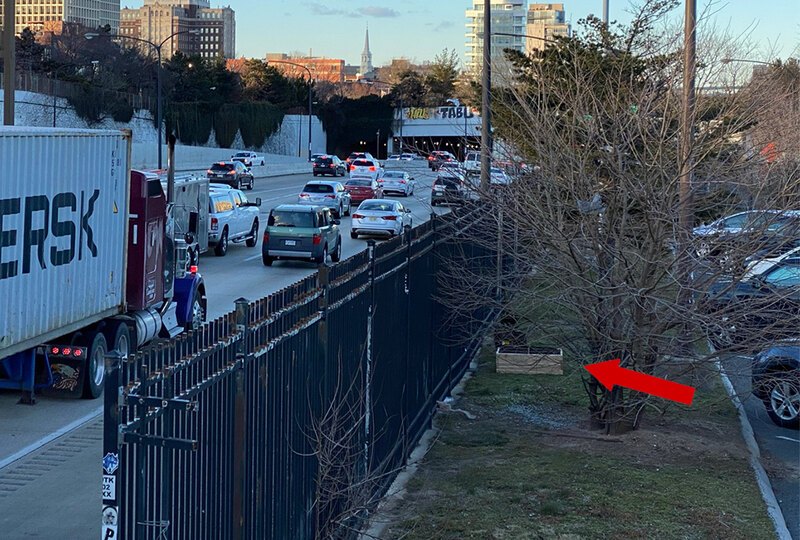
In February, test plots were installed at two selected sites. Each includes a 3-foot by 3-foot constructed soil box filled with 6 inches of clean topsoil, a potted evergreen shrub, and a mounted air quality sensor that measures real-time PM2.5 concentrations. Baseline data was obtained by collecting a soil sample and wipe sample from the foliage surface and sending these to a lab for analysis. A second round of sampling was done at the one month point and will be repeated after months 3, 6, 10, and 12 to investigate accumulation of heavy metals and polycyclic aromatic hydrocarbons and determine if accumulation rates can be detected. To accompany this primary research, the team will also sample nearby established urban roadside landscapes to look for evidence of pollutant accumulation.
The project team will hold three more engagement sessions with the advisory group, and data collection will take place through the end of this year with the final analysis and report completed in January 2022. In addition to serving as a pilot for future research and interdisciplinary collaboration, the findings will help to inform federal policy and local decision-making on appropriate land use along roadways and mitigation strategies that prioritize human health and social justice.
